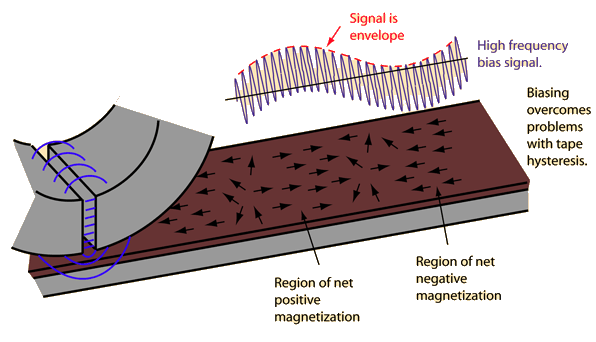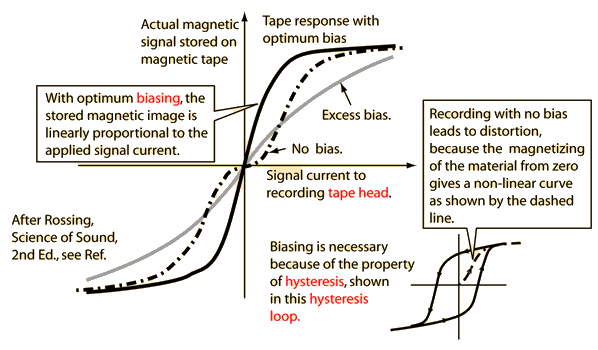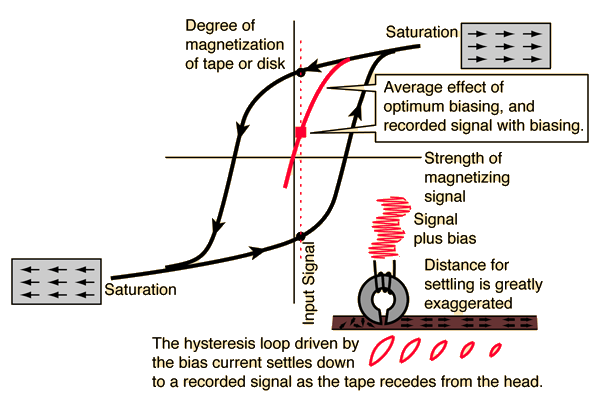Biasing in Tape Recording
A music signal alone cannot be used to produce a faithful tape recording of a sound because the magnetization of the tape is so sensitive to its previous magnetic history, even the effects of the signal recorded just ahead of it. A high frequency bias signal is typically applied to the tape through the tape head along with the music signal to remove the effects of this magnetic history. This large bias signal (typically 40 to 150 kHz in frequency) keeps "stirring" the magnetization so that each signal to be recorded encounters the same magnetic starting conditions. The necessity for biasing has its origin in the magnetic property called hysteresis - the magnetic material tends to hold onto any magnetization it receives and must be actively driven back to zero to start over. Magnetic emulsions made with chromium dioxide require a larger biasing signal to make use of their wider dynamic range, so modern recorders have different bias settings for iron oxide, chromium dioxide, and metal tapes. With optimum biasing, the recorded magnetic image is proportional to the signal current applied to the record head.
One could become almost philosophical about the process by which one can produce the sound of a beautiful symphony from a "ribbon of rust". Biasing is critical to this process of imposing the design of the symphony upon a medium which would tend to have random variations because of thermal energy and a kind of "inertia" in the form of hysteresis that resists the production of an undistorted image of the music. Biasing plays the role of "scrambling" or "stirring" the medium dynamically so that each element of the musical image you intend to impose will have the same "blank slate" upon which to write. The scrambling process of biasing also increases the sensitivity for the recording of a clean signal, i.e., you can record with a much smaller input signal because the medium is more susceptible to the imposition of the pattern you intend.
|
Index
Sound reproduction concepts
Tape recording concepts
Reference
Rossing
Science of Sound
Ch 21 |


